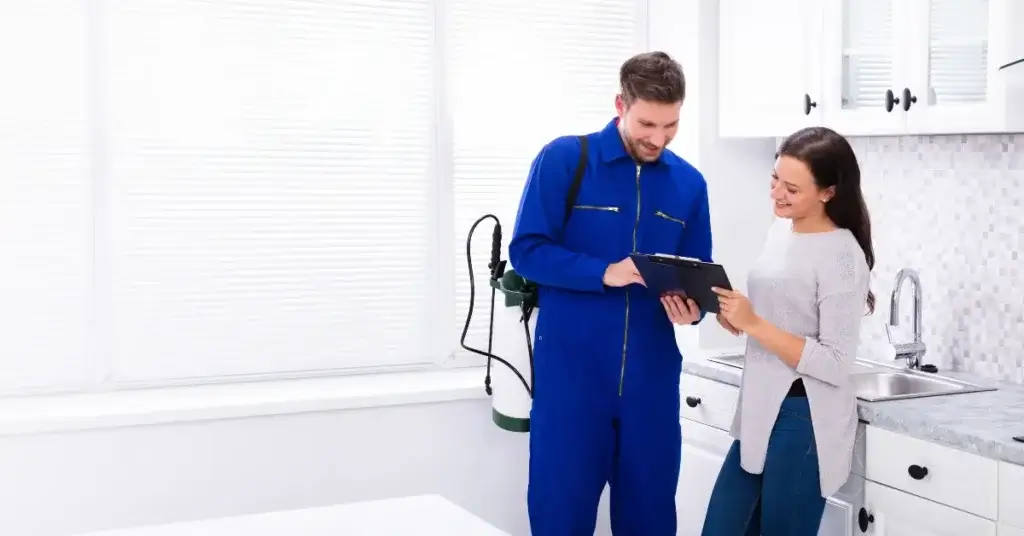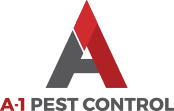
Indoor Pest Control Services: What Bugs Are In Your House?
Is your home crawling with bugs? Do you hear faint scratching or wings flapping in the night? It might be time to work with an exterminator to help manage your indoor pest control. When insects disturb that peace, it’s more than just annoying - they can lead to health risks, property damage, and lost sleep.
To keep your home pest-free, we’ve got your guide to the most common bugs found in North Carolina homes: How to identify them, the threats they might pose, and how A-1’s indoor pest control services can keep these intruders at bay.

Table of Contents
The Most Common Indoor Pests
From scurrying across kitchen counters to hiding in the dark corners of closets, here are the most commonly found indoor pests in North Carolina.
1. Cockroaches
If you’ve ever dealt with cockroaches in your home or apartment, you already know that they live up to their reputation for resilience. These frustrating little bugs are known for their ability to adapt to various environments, and they thrive particularly well in dark, warm spaces.
Beyond just their unsettling physique, cockroaches pose significant threats to both human health and the cleanliness of indoor spaces, spreading harmful bacteria and pathogens as they forage for food. You’re most likely to find them in kitchens and pantries looking for their next meal.
These pests shed skin and leave behind droppings, which can become airborne particles, triggering allergies and potentially worsening asthma symptoms in sensitive individuals.
Indoor pest control services usually use baits and traps strategically placed in areas of cockroach activity to tackle these infestations, along with carefully-selected insecticides,
2. Ants
Ants are common indoor pests that seek out food sources in your kitchen and pantry. While some ant species are merely a nuisance, others, like carpenter ants, can cause structural damage. Identifying and sealing entry points, removing food sources, and using ant baits are common strategies employed by pest control services.
Ants are all too familiar indoor pests that can quickly become unwelcome guests in your home, seeking out food sources in your kitchen and pantry much like their cousin the cockroach. While some ant species are relatively harmless and merely considered a nuisance, others, such as carpenter ants, possess the potential to inflict serious structural damage to your home.
The best defense, as they say, is a good offense—so it's best to take preventative measures against ants before they make their way inside. How? By removing food sources from their grubby grasps, cleaning up spills and crumbs quickly and emptying trash bins often. It’s also a good idea to Identify and seal any potential entry points including cracks in windows and doors, gaps in foundations, and openings around utility lines.
If you do find yourself dealing with an ant infestation, indoor pest control solutions like baits and ant traps are extremely effective with minimal environmental impact. In cases where structural damage is a concern, particularly with carpenter ants, targeted treatments by a professional pest control team might be necessary to eliminate the threat and protect the integrity of your home.
3. Termites
Of all the bothersome indoor pests on this list, Termites might just be the most destructive—causing billions of dollars in property damage annually. The real threat of termite infestations lies in their ability to cause severe damage over an extended period before their presence becomes evident.
Termites work silently, feeding on wooden components, including beams, joists, and support structures. By the time outward signs of damage show up, such as sagging floors, buckling wood, or hollow-sounding timber, the extent of the destruction is often already major.
Regular and professional termite inspections play a key ole in early detection and intervention. Trained indoor pest control professionals know what to look for when inspecting for termites. A termite inspection provides homeowners with peace of mind by enabling early identification of termite activity and potential vulnerabilities in the structure.
The exterminators at A-1 Pest Control use Sentricon termite treament to safeguard homes across North Carolina. Whether you have a termite problem right now or want to prevent one from ever happening, the Sentricon® system helps take and keep control of your home.
4. Bed Bugs
Even the mention of these tiny nocturnal blood-suckers is enough to make most homeowners recoil, but we’d be remiss if we didn’t cover them in our list of indoor pests. While not extremely common, a bed bug infestation is more than just an inconvenience—it’s a time consuming and challenging pest control process.
Bed bugs are nocturnal pests that feed on the blood of humans and pets. They often hide in cracks and crevices, making them challenging to eliminate without professional help. As opportunistic feeders, they emerge from their hiding spots to feed on hosts while they sleep, leaving behind itchy bites and often evading detection until the infestation has reached a significant level.
Thorough inspections are one of the most important aspects of effective bed bug control. Indoor pest control professionals have the tools and knowledge to conduct detailed examinations of living spaces, focusing on areas where bed bugs are known to harbor. Identifying the extent of the infestation guides the development of a targeted treatment plan.
If an infestation is found, targeted treatments are crucial for addressing them. Chemical treatments, heat treatments, or a combination of both may be used to eradicate bed bugs at all life stages. The choice of treatment depends on the severity of the infestation, the specific characteristics of the living space, and the needs of the household.
5. Spiders
While the majority of spiders don’t pose a threat to people, and even play a beneficial role in controlling insect populations, there are certain species like brown recluse spiders that can pose risks. Even the mere presence of spiders indoors (even the harmless ones) can evoke a sense of unease among many people.
The most common venomous spiders in North Carolina are the black widow and the brown recluse, whose bites can cause serious reactions and often require medical attention. Other spider species possess venom that, while usually not harmful to humans, can cause mild to moderate reactions in some people. .
Indoor pest control services use targeted treatments to address spider infestations. These treatments may include:
- Residual insecticides that create barriers to deter spiders from entering or traversing treated areas
- Sealing entry points to prevent access to indoor spaces through gaps, cracks, and openings in doors, windows, and walls.
- Integrated Pest Management (IPM) using a combination of methods, including biological controls, habitat modification, and chemical treatments
6. Flies
Houseflies and fruit flies, though small in size, can become big disruptions when they infiltrate a home.
Houseflies are attracted to a variety of food sources, including decaying organic matter and human food. Their ability to land on and feed on a range of substances, coupled with their habit of regurgitating and excreting while feeding, makes them potential carriers of disease-causing bacteria.
Fruit flies, on the other hand, are drawn to ripe or fermenting fruits and vegetables, making kitchens and food storage areas their preferred habitats. Controlling these fly populations can help maintain a hygienic indoor environment.
Regular disposal of organic waste, including food scraps and leftovers, and sealing up trash bins, can help eliminate breeding grounds for both houseflies and fruit flies. Sealing entry points is another effective method for controlling fly infestations. Houseflies and fruit flies can enter homes through gaps in windows, doors, and screens, so identifying and sealing these entry points creates a necessary barrier.
3 Major Threats Posed by Indoor Pests
Not only do bugs and rodents cause a sense of unease and disgust when found inside of a home, but they can be hazardous to your property - and your family. That's why indoor pest control is so important to regularly maintain! If you're not on a pest control plan, select your coverage and contact the A-1 exterminators today.
1. Health Risks
Many indoor pests can pose health risks to humans and pets. Cockroaches and rodents, for example, can trigger allergies and asthma, while certain spiders and ticks may carry venom or diseases. Effective indoor pest control is crucial for minimizing these health risks.
2. Property Damage
Some pests, like termites and rodents, can cause significant property damage. Termites feed on wooden structures, weakening them over time, while rodents may gnaw on electrical wiring and insulation. Identifying and addressing potential sources of damage is essential for protecting your home.
3. Contamination of Food and Surfaces
Pests like cockroaches and rodents can contaminate food and surfaces with their droppings, urine, and saliva. This contamination can lead to the spread of bacteria and contribute to foodborne illnesses. Maintaining a clean and pest-free environment is essential for ensuring the safety of your food and living spaces.
Effective Indoor Pest Control Prevention
So how do you keep these intruders out, or deal with infestations when they do arise? An experienced indoor pest control team has the tools and knowledge to choose the right strategy for your situation.
Regular Cleaning and Maintenance
A clean and well-maintained home is less attractive to pests. Regularly vacuuming, sweeping, and disposing of garbage properly can help eliminate potential food sources and hiding spots for pests.
Sealing Entry Points
Preventing pests from entering your home is a crucial aspect of indoor pest control. Sealing gaps, cracks, and crevices in walls, windows, and doors can help keep pests at bay.
Proper Waste Management
Pests are attracted to food waste and debris. Proper waste management, including using sealed trash bins, promptly cleaning up spills, and disposing of food waste properly, helps reduce the likelihood of infestations.
Moisture Control
Many pests thrive in damp environments. Addressing leaks, ensuring proper ventilation, and using dehumidifiers can help control moisture levels and discourage pests like cockroaches and silverfish.
Professional Pest Inspections
Regular professional pest inspections can catch infestations early before they become widespread. Early detection allows for more effective and targeted treatments.
Targeted Treatments and Preventative Measures
Indoor pest control services employ targeted treatments to eliminate existing infestations and preventative measures to deter future ones. This may include the use of baits, traps, insecticides, and other methods tailored to the specific pests present.
Final Word: Indoor Pest Control Services
If you find yourself running into any of the insects listed here in your own home a little too often, it may be time to get in touch with your local indoor pest control services . Regular inspections, proactive measures, and professional assistance are the best antidotes to these unwanted guests.
A-1 Pest Control has been dedicated to maintaining pest-free homes in North Carolina for decades. If you'd like to explore our pest control plans or schedule your complimentary initial inspection, don't hesitate to reach out to us today. You can contact us online or call us at 828-481-9140.
